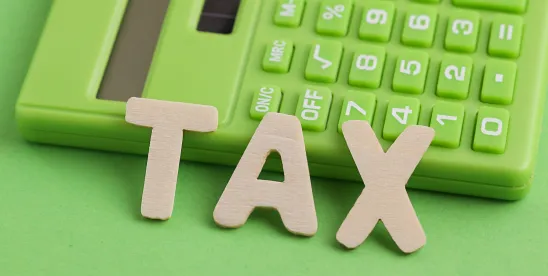Why did the Inflation Reduction Act (IRA) reduce the base amounts of the energy tax credits?
The IRA[1] reduced base credit amounts from their pre-IRA levels to encourage energy projects to meet Congressional policy objectives. An important objective of the IRA is to drive investment and economic growth toward targeted low-income and disadvantaged communities, while also creating well-paid American manufacturing and infrastructure jobs, and ensuring that the people who work on them receive appropriate training to do so.
Accordingly, while Congress reduced the Investment Tax Credit (Section 48 ITC, or ITC) base credit amount from 30 percent to 6 percent under IRA, it then seeks to encourage applicants to apply for additional “bonus credits.” Project developers are incentivized to pay competitive wages, and to invest in certain low-income and energy communities in the United States by multiplying and increasing these base credits.
In this way, the IRA seeks to help ensure that most jobs created by IRA energy tax credits meet the prevailing wage requirements, use qualified apprentices, and that the projects utilize domestically manufactured product components. These bonus credits can be added on top of the base credit; and multiple bonus credits can be stacked on top of each other, providing significantly increased total credit awards.
In fact, if all applicable bonus credits apply, the total credits amount for a post-IRA credit can exceed the pre-IRA credit amount of 30 percent. With or without bonus credits, the base credit amount under the respective statutory provision remains available. Project developers can now earn bonus credits that are added to their base credits’ amounts, allowing projects to catch-up to or exceed pre-IRA credit amounts.
What are the Bonus Credits?
Four bonus tax credits can be available if statutory requirements are met: (1) the Prevailing Wage and Apprenticeship Bonus Credit (PWAP Bonus Credit), (2) the Domestic Content Bonus Credit, (3) the Energy Community Bonus Credit, and (4) the Low-Income Communities Bonus Credit. To incentivize developers to pay their workers a “prevailing wage” and to provide “apprenticeship programs” to hire registered apprentices (that is, PWAP), the PWAP Bonus Credit increases the available credit amount by a multiple of five, that is, from 6 percent to 30 percent. The PWAP Bonus Credit is discussed in Part IV of this Q&A with Andie series.
Additional bonus credits can be made available if project developers source their steel, iron, and manufactured products from the United States, as I discuss in Part V: Domestic Content Bonus Credits; invest in certain disadvantaged communities and geographic areas (see Part VI: Energy Community Bonus Credits);[2] or invest in certain low-income communities (see Part VII: Low-Income Communities Bonus Credits). These “incremental” or “stackable” bonus credits, provide significant increases in the total value of credits available for a qualified project. Projects that qualify for three of the bonus credits can increase their total credit amounts to cover 50 percent or more of certain project costs.
Which tax credits may qualify for the bonus tax credits?
-
Prevailing Wage and Apprenticeship Program (PWAP) Bonus Credit
Provides a multiplier for meeting the PWAP requirements.
It applies to the credits found at Internal Revenue Code (Code) Sections 30C, 45, 45L, 45Q, 45U, 45V, 45Y, 45Z, 48, 48C, 48E, and the tax deduction at Section 179D.[3]
-
Domestic Source Bonus Credit
Provide an increased credit for sourcing manufactured product components and construction materials from U.S. sources.
It applies to the credits at Sections 45, 45Y, 48, and 48E. -
Energy Community Bonus Credit
Provides an increased credit for investment in certain targeted “energy communities.”
It applies to the credits at Sections 45, 45Y, 48, and 48E. -
Low-Income Communities Bonus Credit
Provides an increased credit for investment in certain “low-income communities.”
It applies to certain solar and wind facilities under Sections 48(e) and 48E.
Accordingly, a project that is eligible for the credits at Section 45, 45Y, 48, and 48E is also eligible for the PWAP credit, and also for the Domestic Source Bonus Credit and the Energy Community Bonus Credit.
How are bonus credits added to the base credit amount?
Here is an example of a real-world project:
- An ITC project has its available base credit amount increased by a multiple of five (from 6 percent to 30 percent) if it meets the PWAP requirements.
- A second incremental increase of 10 percent can be available if certain construction materials come from U.S. sources and meet the requirements of the Domestic Source Bonus Credit.[4]
- A third incremental increase—also equal to 10 percent—can be available if an ITC project is located in a disadvantaged “energy community” and it meets the requirements for the Energy Community Bonus Credit.
- In addition, if a “small” wind or solar project of 5 megawatts or less is constructed in certain low-income communities, another bonus credit of either 10 percent or 20 percent can be available to certain types of those facilities (Low-Income Communities Bonus Credit).
With the addition of these bonus credits, a property or facility developer can reduce specified project costs by 50 percent or more.
The firm extends gratitude to Nicholas C. Mowbray for his comments and exceptional assistance in the preparation of this article.
[1] The Inflation Reduction Act of 2022, Pub. L. No. 117-169, 136 Stat. 1818 (2022) (IRA), August 16, 2022.
[2] Energy communities are disadvantaged communities that have been hard hit by closures of coal mines or coal-fired power plants, have higher than average unemployment, and/or contain geographic areas with hazardous substances or pollutants concomitant with that history of use.
[3] The prevailing wage and apprenticeship requirement only applies to energy projects or facilities that produce over one megawatt of energy, or to facilities that began construction on or after January 29, 2023.
[4] Certain projects that don’t meet the sourcing requirements can have their credits reduced or eliminated.




 />i
/>i

